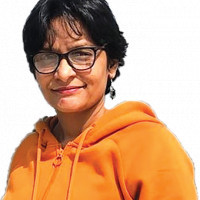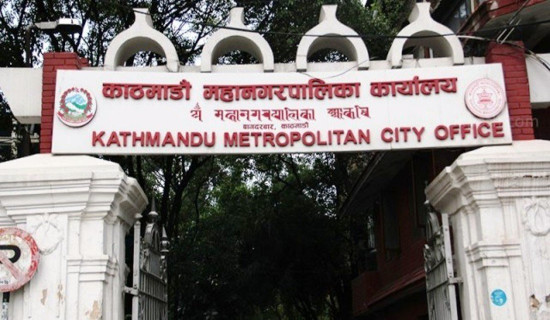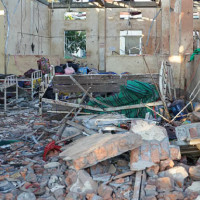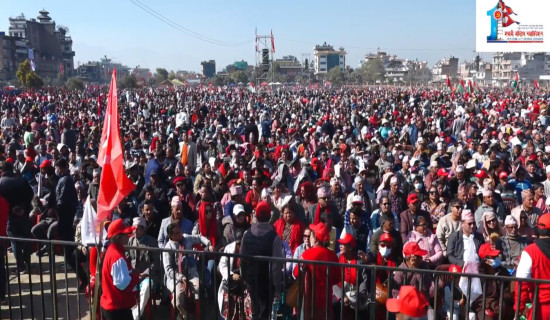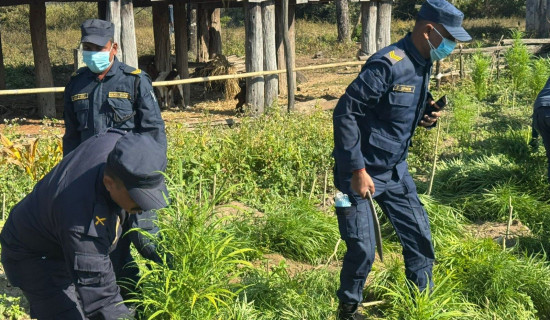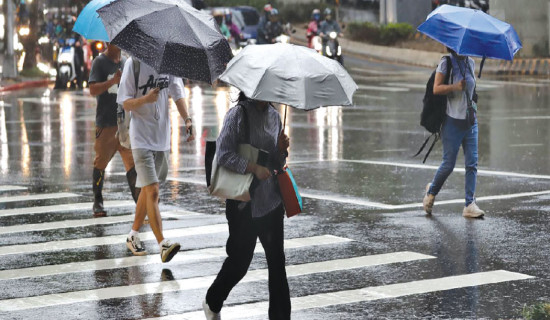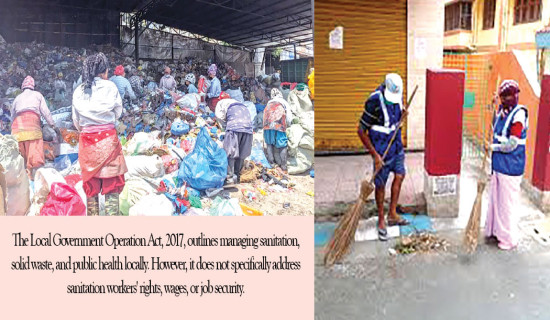- Saturday, 13 December 2025
Recharge ponds restore water in Dhankuta
Dhankuta, Nov. 23: Carrying an empty jar and walking down to the stream to fetch water was a routine work for Kamala Shahi of Dhankuta Municipality Ward No. 1 immediately after she woke up every morning. It used to take about an hour to cover the two-way distance. The routine lasted for years.
A member of the Jaladhar Muladhar Struggle Committee, Kamala witnessed firsthand how deeply water scarcity affected the families.
Later, she started visiting public tap water to collect the precious liquid. But that too was time-consuming, as she had to wait for her turn to fill up the jar. Sometimes, water stopped trickling down before her turn arrived, leaving her with no option but to visit the same spring or return home with empty jars.
The only way to fetch water is from Dharabari Mul (spring), where she had to walk an hour to fetch water and wash clothes. Almost 15 households depended on the same spring.
The turning point came when the community, supported by conservation agencies, including the International Centre for Integrated Mountain Development (ICIMOD), began investing in water recharge and spring revival. Finally, Sukepokhari in Ward No. 5 of the municipality, once a neglected traditional pond, was revived as a rainwater harvesting and recharge system.
The idea was simple but powerful -- capture monsoon rainfall, allow it to filter through the soil, and revive the underground aquifers that once fed the springs.
Krishna Kumar Thakuri, popularly known as Paani Baje, is a local water user who has long been involved in measuring the spring water that flows through Sukepokhari.
According to him, when he started to measure the water, the flow of the water increased since the recharge pond was constructed. He measures the water flow twice a month, and he is happy to measure the water flow as the speed of the water is increasing.
He said that before a plastic-lined pond was constructed in Sukepokhari to attract tourists travelling along the Koshi Highway, natural ponds had completely dried up. The plastic pond prevented water from seeping into the ground, causing downstream water sources to dry up even further.
Later, ICIMOD introduced an initiative to build a recharge pond that collects rainwater and allows it to seep into the ground, helping to restore and increase the flow of springs downstream, Thakuri said.
The revived recharge pond at Sukepokhari allowed water to begin returning to the springs. Soon after, household taps with metres were installed across the settlement.
The ICIMOD worked with local partners using their six-step protocol for spring revival. Two key sites were selected for intervention -- Sukepokhari in Ward No. 5 and Dalepokhari of Dhoje Danda in Ward No. 2 of the municipality.
Hikmat Bahadur Limbu, Ward Chairperson of Chhatar Rural Municipality, Ward No. 2, said the community dug 50 recharge trenches to trap rainwater and runoff at the Dalepokhari in Dhoje Danda of the rural municipality. Rain instruments were installed to track changes in rainfall and water discharge, critical data for understanding the impact of the work. Reviving the land meant reviving the water that people depended on, he added.
Dr. Anu Kumari Lama, Tourism Specialist at ICIMOD, said that before starting the recharge pond pilot project in these two areas, ICIMOD conducted research on the Koshi River Basin. An assessment of the lower Koshi region showed that mid-hill areas were gradually experiencing a water crisis. “Under nature-based solutions, we initiated the recharge pond pilot project in Dhankuta to protect water resources using simple and natural methods,” she said.
“We have revived two ponds through natural techniques. These ponds had been abandoned for a long time, but they are now helping to restore local springs. Eventually, the water will recharge the Nibuwathanka watershed, which is the main water source for the people of Dhankuta.”
“With the revival of water sources, our empty jars have now become full, and women are becoming community activists like me, as we no longer need to spend hours fetching water,” Shahi said.


